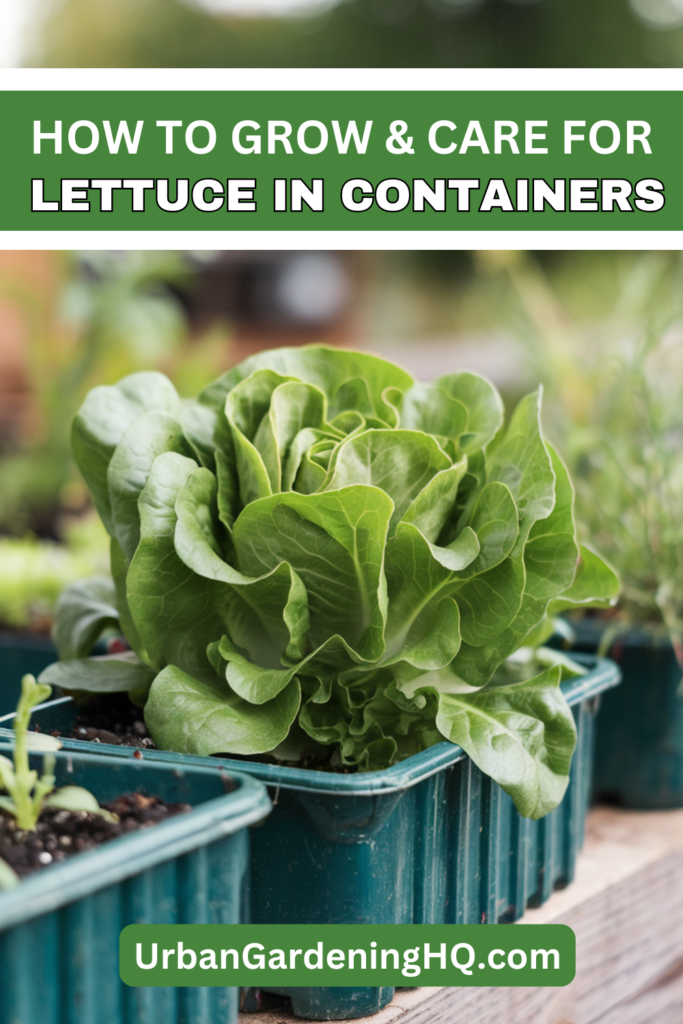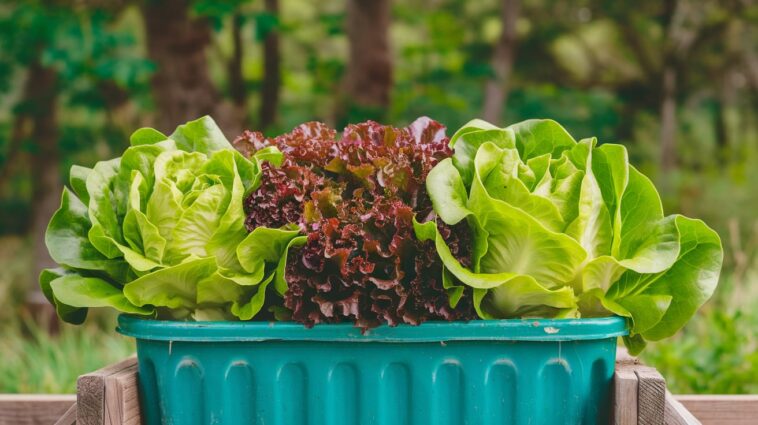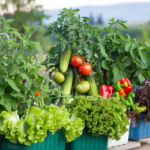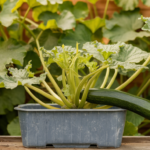There’s nothing quite like stepping outside, snipping a few fresh leaves of lettuce, and tossing them into a crisp, homemade salad. Growing lettuce in containers has been one of my favorite gardening experiences—it’s simple, rewarding, and perfect for anyone, even those with limited space. Over the years, I’ve learned some key techniques that help me maintain a lush, thriving container lettuce garden.
Choosing the Right Container
When I first started, I made the mistake of using small, shallow pots, thinking lettuce didn’t need much room. While lettuce roots are relatively shallow, I’ve found that a container at least 6–8 inches deep and wide enough to allow proper spacing works best. I usually opt for window boxes, wide planters, or even repurposed wooden crates. Drainage is key, so I always ensure my containers have holes at the bottom to prevent soggy roots. If I’m using a container without holes, I drill some myself to improve aeration.
Another trick I’ve found helpful is using self-watering containers. These are particularly useful during warmer months when soil tends to dry out faster. They help maintain a consistent moisture level, preventing stress on the plants.

Picking the Perfect Lettuce Variety
One of the best parts of growing lettuce is the variety! I love experimenting with different types, from the tender butterhead and crisp romaine to the colorful loose-leaf lettuces that keep my salads interesting. For containers, loose-leaf and cut-and-come-again varieties work best since they allow continuous harvesting.
Some of my personal favorites include:
- Butterhead (Bibb, Boston) – Soft, tender leaves with a mild flavor.
- Romaine (Cos) – Crunchy and great for Caesar salads.
- Loose-leaf (Red Sails, Black-Seeded Simpson, Salad Bowl) – Fast-growing and ideal for frequent harvesting.
- Oakleaf – Beautifully shaped leaves with a slightly nutty taste.
Preparing the Soil
The secret to lush, healthy lettuce? Good soil. I always use a high-quality potting mix enriched with compost. Lettuce loves moisture but hates being waterlogged, so I ensure my soil has good aeration by mixing in a bit of perlite or coconut coir.
To maintain nutrients, I refresh the soil each growing season by mixing in organic matter like composted manure or worm castings. A pH level between 6.0 and 7.0 works best for lettuce, so I occasionally test my soil and adjust it if needed using lime or sulfur.
Sowing and Planting Lettuce
I’ve tried both direct sowing and transplanting seedlings, and I prefer direct sowing for leaf lettuce varieties. I scatter the seeds lightly on the soil surface and barely cover them with a thin layer of soil. Keeping the soil consistently moist during germination is crucial—I usually mist the surface daily to prevent drying out.
For head lettuce, I start seeds indoors and transplant the seedlings once they develop a few true leaves. I make sure to space them at least 6 inches apart to give them enough room to grow. A trick I’ve learned is to transplant in the evening or on an overcast day to reduce transplant shock.
Watering Routine
Lettuce thrives in consistently moist soil, and since containers dry out faster than garden beds, I check them daily. I water in the morning to allow the leaves to dry before evening, reducing the risk of disease. During hot days, I sometimes water twice—once in the morning and a light watering in the late afternoon if the soil feels too dry.
To prevent water loss, I mulch the surface with straw or shredded leaves. This helps retain moisture and keeps the soil temperature more stable, reducing the chances of bolting in hot weather.
Sunlight and Temperature Considerations
Lettuce loves cool weather, so I place my containers where they get morning sun but are shaded from harsh afternoon heat. In the peak of summer, I move them to a slightly shadier spot or use a shade cloth to prevent bolting. In the cooler months, a sunny windowsill or a south-facing patio keeps my lettuce happy.
Lettuce grows best between 45°F and 75°F. If temperatures rise too high, I sometimes use a light misting system to cool my plants. Alternatively, I stagger my plantings so that I always have fresh lettuce at different stages of growth.
Fertilizing for Growth
Lettuce is a light feeder, but I’ve noticed a difference when I give my plants a little boost. Every two weeks, I use a diluted liquid fertilizer like fish emulsion or compost tea to encourage steady growth without making the leaves bitter. If I notice pale or slow-growing leaves, I supplement with a balanced fertilizer (10-10-10) at half strength.
Dealing with Pests and Problems
Aphids and slugs are my biggest lettuce enemies. I keep aphids in check by spraying a mild soapy water solution or introducing beneficial insects like ladybugs. For slugs, I sprinkle crushed eggshells around my plants or use copper tape on my container edges. Beer traps also work well for slugs—I place small bowls of beer near my lettuce, and the slugs crawl in but can’t crawl out.
Bolting is another issue, especially in warm weather. To delay it, I harvest leaves regularly and ensure my lettuce gets enough shade during hot afternoons. If a plant does bolt, I remove it and use the space for a fresh batch of seeds.
Harvesting for Continuous Growth
The best part of growing lettuce? Harvesting! I use the cut-and-come-again method, snipping outer leaves while letting the inner ones continue growing. This way, I get weeks of fresh, homegrown greens from just one planting.
For head lettuce, I wait until the heads are firm before harvesting. I cut them at the base with a sharp knife and immediately rinse them in cold water to keep them crisp.
Final Thoughts
Growing lettuce in containers has completely changed the way I garden. Whether I have a balcony, patio, or just a sunny window, there’s always room for a fresh supply of leafy greens. With the right care and a little patience, anyone can enjoy the convenience and satisfaction of homegrown lettuce. If you haven’t tried it yet, I highly recommend giving it a go—you’ll never look at store-bought lettuce the same way again!
Plus, homegrown lettuce tastes fresher, lasts longer, and saves money. It’s one of the easiest crops to grow, making it perfect for beginner gardeners and seasoned growers alike. So grab a container, plant some seeds, and enjoy your very own lettuce garden!


